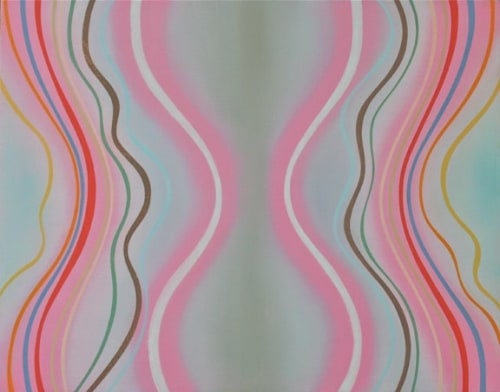
Helen Miranda Wilson, Girlfriend, 2012, Oil on panel, 11 x 14 inches. (BP#5539)
OF ALL THE STYLES, theory-driven rallying cries, movements, schools and creative curiosities that have played memorable parts in modern art's evolution, few have been as durable and permutable as abstraction—in painting, sculpture and countless mixed-media forms.
Today, photo-based and conceptualist art genres, influenced by post-modernist critical theory, may still rule the roost in some precincts of the art market, but wherever painting and sculpture are still robustly present, expect to find abstract works by well-known masters and up-and-comers alike on view in galleries and museums. The creations of the five U.S.-based artists profiled here offer a vivid portrait of the different ways in which art-markets are still finding meaning and expressive power in the enduring language of abstraction.
HELEN MIRANDA WILSON
VIVID COLOR, a formalist's heightened sense of awareness and a perfectionist's attention to detail come together in Helen Miranda Wilson's superbly crafted oil paintings on small wooden panels. Formerly a painter "from observation," as she puts it, of magic-realist nature scenes, Wilson now creates compositions dominated by eye-catching colored stripes arranged in concentric circles, undulating waves or "V" forms that suggest flowing cascades.
Neatly ordered and intense, they hum with a concentrated energy that seems to emanate from the core of each painting-object like the auras of talismanic totems. Wilson recalls seeing Paul Klee's work while spending some time in Switzerland as a teenager. That exhibition "moved me physically," she says, and was a major source of inspiration for her art-making. In 1999, after many years in New York, Wilson returned to her hometown on Cape Cod, where she and her husband, a sculptor, now live in the house she grew up in. There, they raise chickens and bees and keep a food garden. This direct link to nature is important to her.
"What is it? What is there?" Wilson asks rhetorically about her abstract images. When viewers examine them, she says, "I want them to pay attention to my formal language and not bring meanings that they project onto them." That sense of unfettered phenomenological experience seems to be reflected in the purity of her painting technique. On primed panels, she uses fresh oil paint with no added medium. In the past she blended her paints with her fingertips; now she uses feather brushes in a so-called wet-on-wet handling of the colored, oily goo. Of each painting she says, "It's as though the while thing has poured itself into itself." "I've always looked at things very formally," Wilson adds. "What are the physical components of something?" In part, that investigation is the very subject of her art. Both heady and exhilarating, her paintings still capture the sense of awe about art making that knocked the socks off the teenager Wilson when she encountered Klee's psychologically intense, formally innovative work for the first time.